The 17 best product tour software options to consider
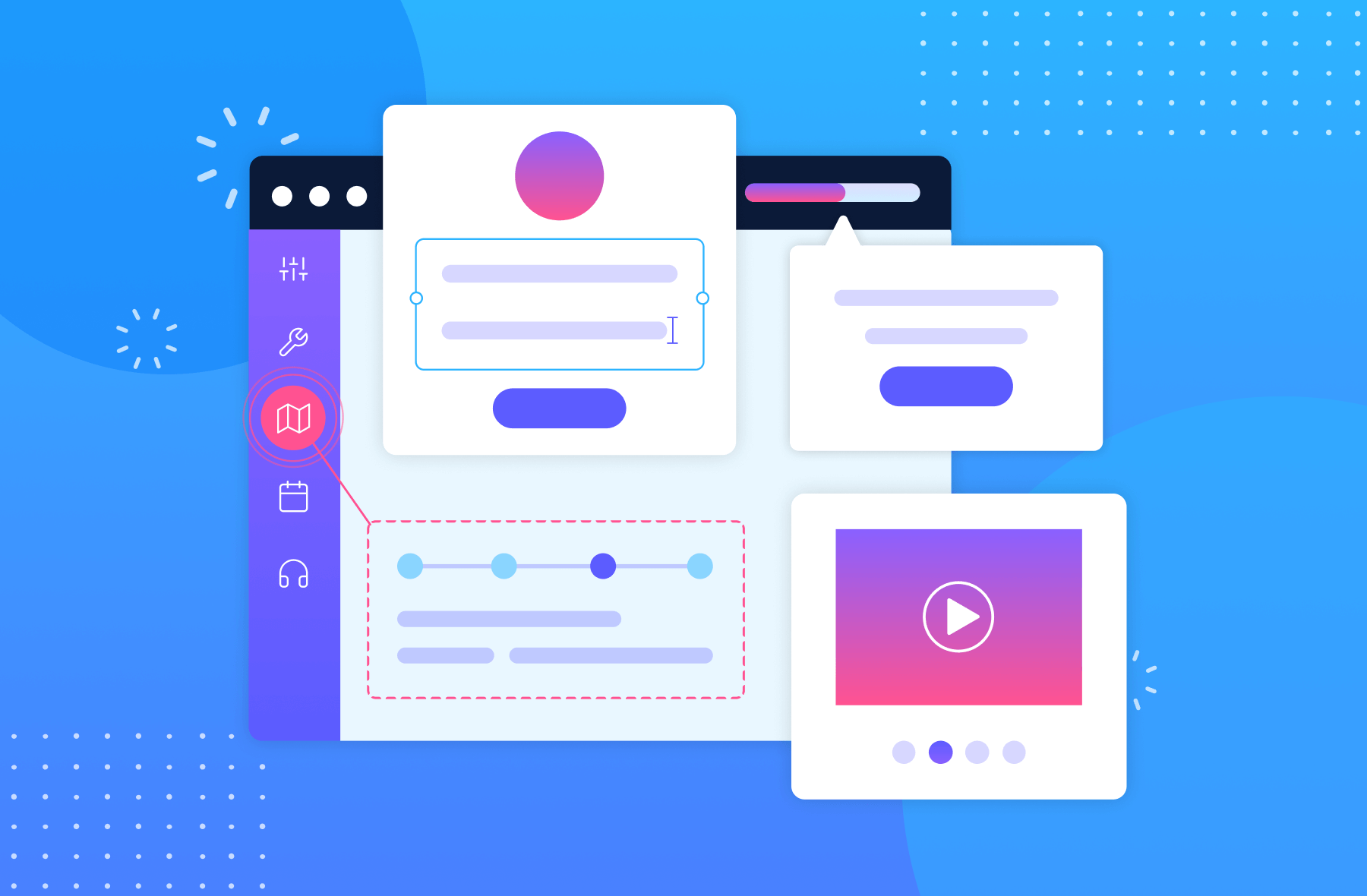
.png)

.png)
Product tour software options have made it easier than ever to show your buyers exactly what they’re getting—as well as improve their user onboarding experience.
Demos and product tours are some of the most valuable resources available to buyers when comparing different vendors. In an Harvard Business Review survey, 72% of respondents reported their purchase decision ultimately came down to the vendor with the best demo or trial.
Not sure which vendor to go with? In this list, we’ll compare 17 of the best product tour software options.
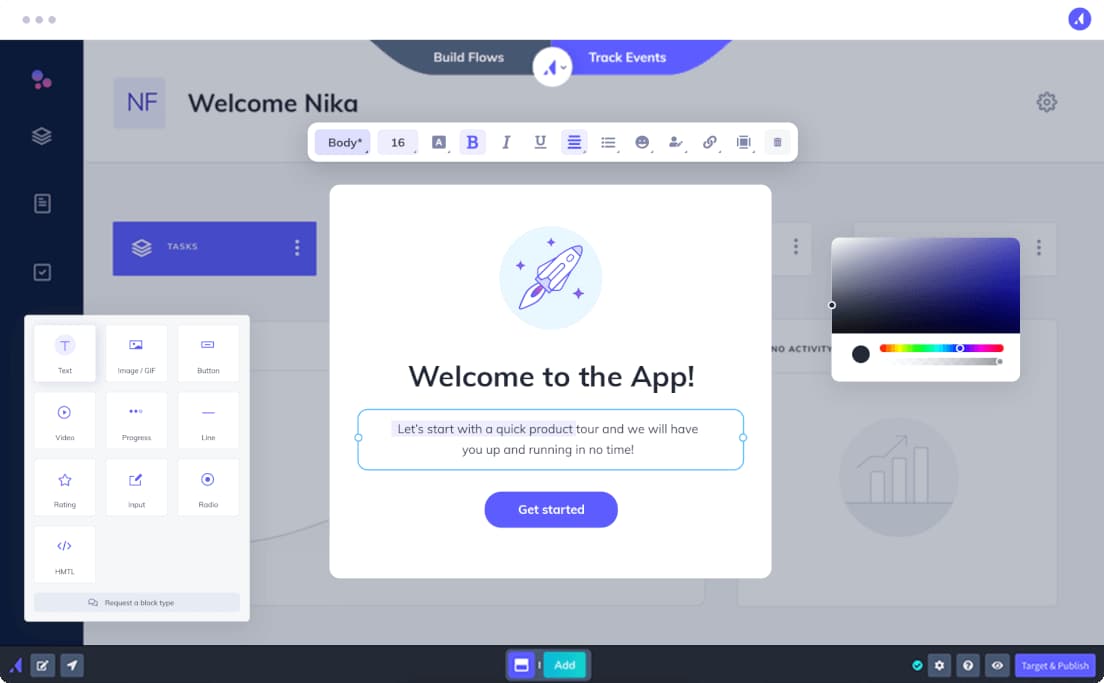
Founded in 2013, Appcues has continually been at the forefront of onboarding excellence. From the beginning, our mission has been to help customers build the best possible user experiences in their products—all without a developer. Appcues makes building product tours simple with pre-made templates and a user-friendly, accessible UI.
Appcues product tour software is designed to be easy for your customers, too. It boasts an extensive UX toolkit, including tooltips, modals, checklists, slideouts, and hotspots. You can customize these tools to look native to your product by using the built-in editor.
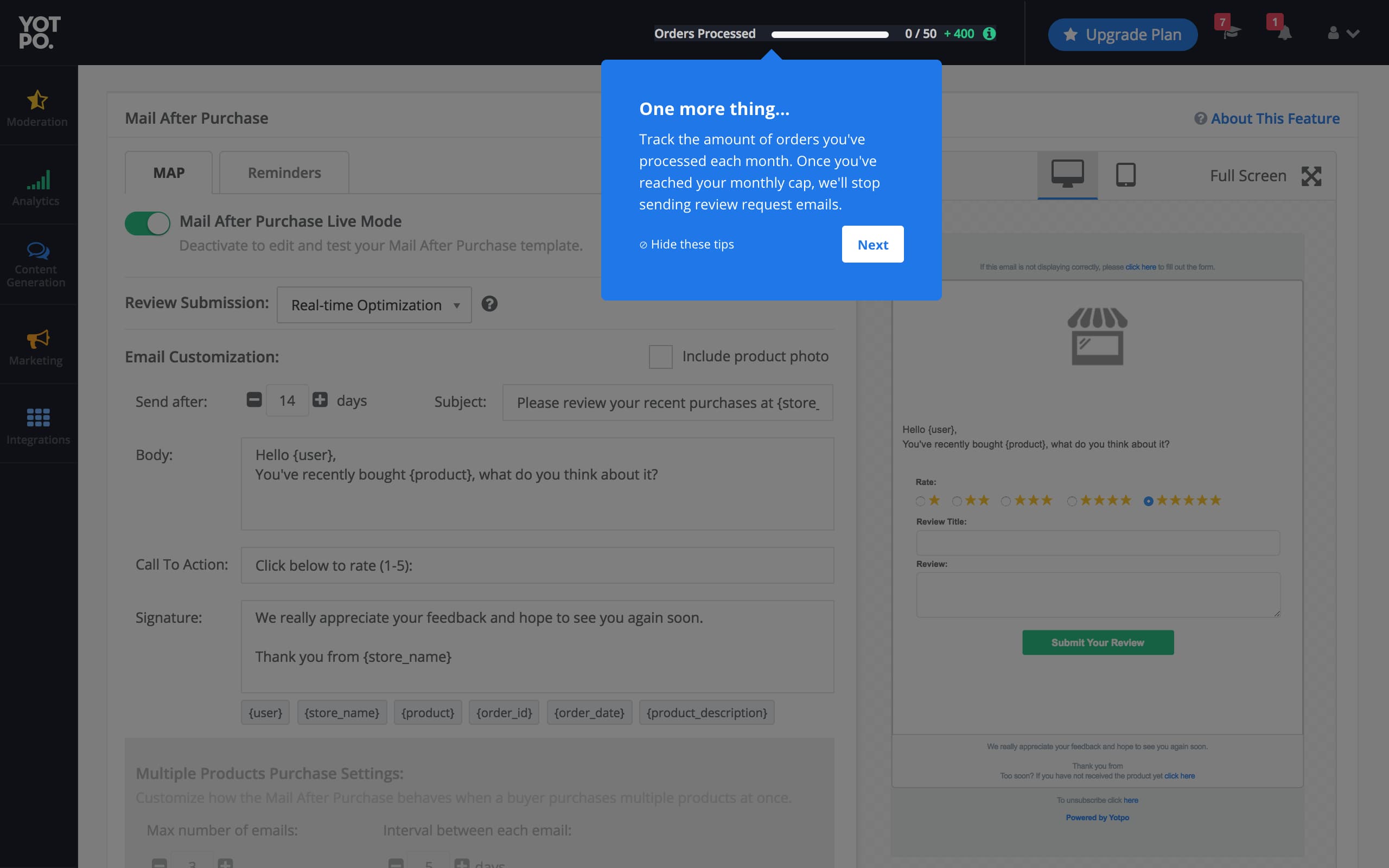
Chances are you’ve already experienced Appcues in action. If you’ve used Vidyard, Lyft, Yotpo, or Amplitude, you’ve undoubtedly encountered a tooltip like the one pictured above. It may never have occurred to you this window was an Appcues-built construction if it hadn’t been singled out—which is the point!
Appcues isn’t limited to “just” designing killer product tours. Underneath the user-friendly exterior is a powerful analytics engine capable of user segmentation, goal tracking, and in-depth reporting. No-code user tracking enables you to discover how customers are using your product and how your product tours can be optimized for maximum efficiency. Whether you're onboarding a new customer or showing off new features, our analytics tools ensure the right segment of customers will have the right experience at the right time.
Appcues powers product tours for companies ranging from startups to the Fortune 500. We admit that our comprehensive product tour and onboarding solutions might not match every company’s immediate needs. If you only need one basic flow and don’t want to pay for features you won’t use, Appcues might not be the right fit for you. But if you're a scaling SaaS business that's ready to build an array of stunning product tours backed by powerful analytics, we’re here to help you out.

With Nickelled, it’s easy to create tooltips, text bubbles, dialog boxes, and more in its content studio. You can customize these tools easily and design tours in multiple languages. Even the entry-level subscription includes the Nickelled Help Assistant, a help widget similar to that of Stonly and Userlane.
Like most of the products on this list, Nickelled enables unique customer tours by leveraging user segmentation. Installing Nickelled only requires downloading a Google Chrome extension, making setup code-free. Its attractive suite of features is rounded out by a great entry-level subscription price of $99.
Things get a little more complicated when you take a dive into pricing. Research shows that the pricing is anywhere from $199-$399 a month range, comparable with that of competitors such as Appcues, Userpilot, and Chameleon.
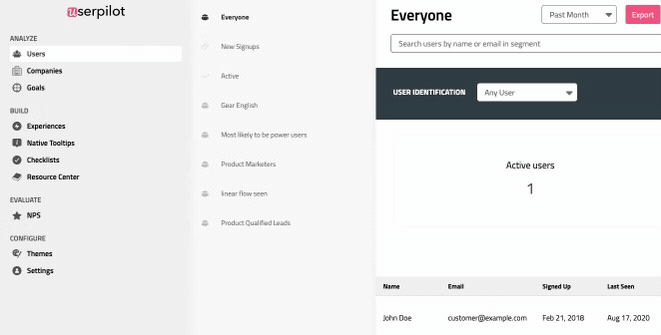
Userpilot offers a robust product tour offering. It contains features essential to building a quality tour, including tooltips, slideouts, and even videos. Userpilot’s analytics tools pack a punch, allowing product managers to set and track goals, segment users, and A/B test product tour flows.
Whether Userpilot would work for your company depends on whether your needs fit within their range of specialization. Those who require product tours for mobile apps should consider another product. The same goes for any company which relies on Salesforce or HubSpot, as Userpilot doesn’t integrate with either of them.

Unlike Userpilot, Pendo is web and mobile app friendly, allowing users to build product tours across platforms. Its collection of features contains nifty product experience options like banners and lightboxes. It also boasts impressive analytics features to support functions like user segmentation to assist with designing product tours for different user personas.
Pendo has a three-pronged approach that includes tour building, analytics and managing and prioritize customer feedback. Unfortunately, because of this split focus, the UI isn’t optimized specifically for tour creation and other onboarding objectives. Whereas some products could be considered “too basic,” Pendo may try to do too much for those who are primarily interested in designing product tours.
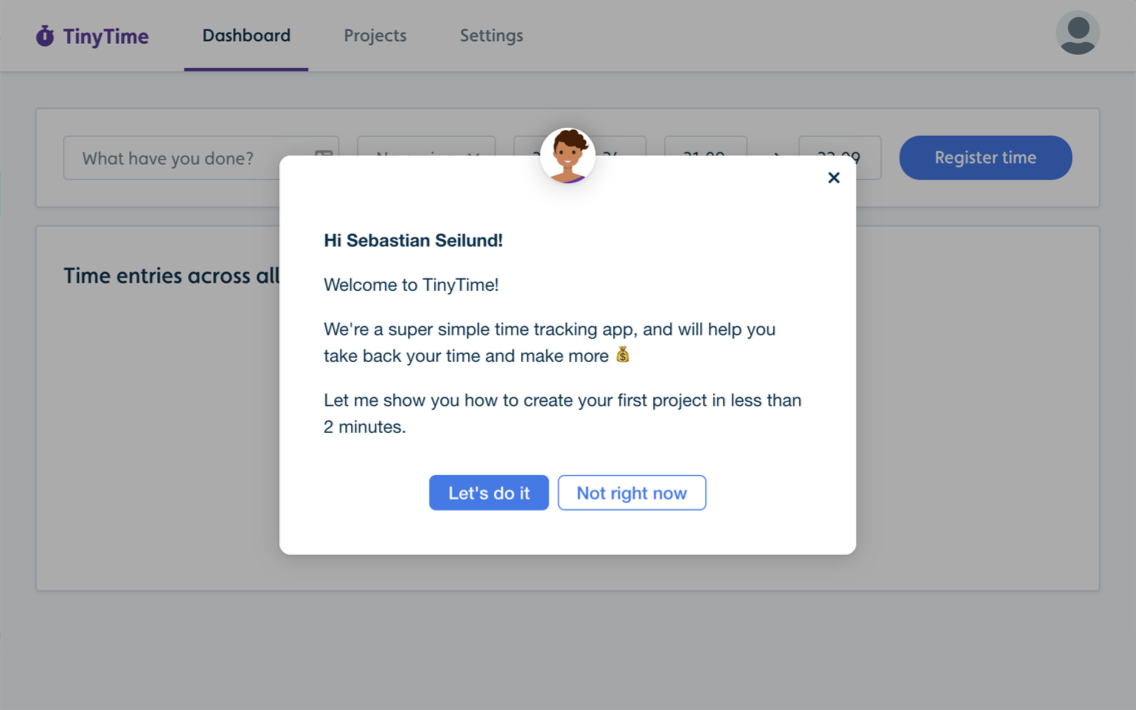
While Userflow’s name isn’t as recognized as some of its competitors on this list, its offerings are extremely strong. It complements standard features like tooltips with user progress checklists, no-code tracking, and integration with a wide variety of platforms like Amplitude or Mixpanel. Userflow allows product managers to customize avatars, colors, and fonts, giving users more control over the aesthetic feel. All of this is backed with built-in analytics functionality for enhancing product tours based on user behavior.
Most customer reviews of Userflow are positive, but several point out the software’s learning curve. Specifically, the UI design is singled out as being less than intuitive and friction-free. From a pricing perspective, their entry-level “Startup” plan is listed at $250, but the plan is restrictive compared to the next-level “Pro” plan. The Startup plan only includes basic integrations, a single checklist, and support for up to just 3,000 monthly users. The Pro plan includes far more features, but you’ll certainly pay for them with the jump from $250 a month to $600.

Toonimo is another product that addresses both employee and customer onboarding. Perhaps stemming from their investment in the “employee tutorial” side of onboarding, Toonimo’s big selling point is their voice-guided tours. Their product tour software hinges on a single concept: shouldn’t the warm, friendly tones of a human voice increase the likelihood of successful onboarding?
This voice assistance mechanism is the main differentiator between Toonimo and other products. Whether a Toonimo product tour would benefit your product or not depends upon whether you think a user will turn the volume up for their product walkthrough. Even the free interactive demo on Toonimo’s website offers a “text-only” alternative to a voice-guided tour, a tacit acknowledgment that voice guidance isn’t for everyone.
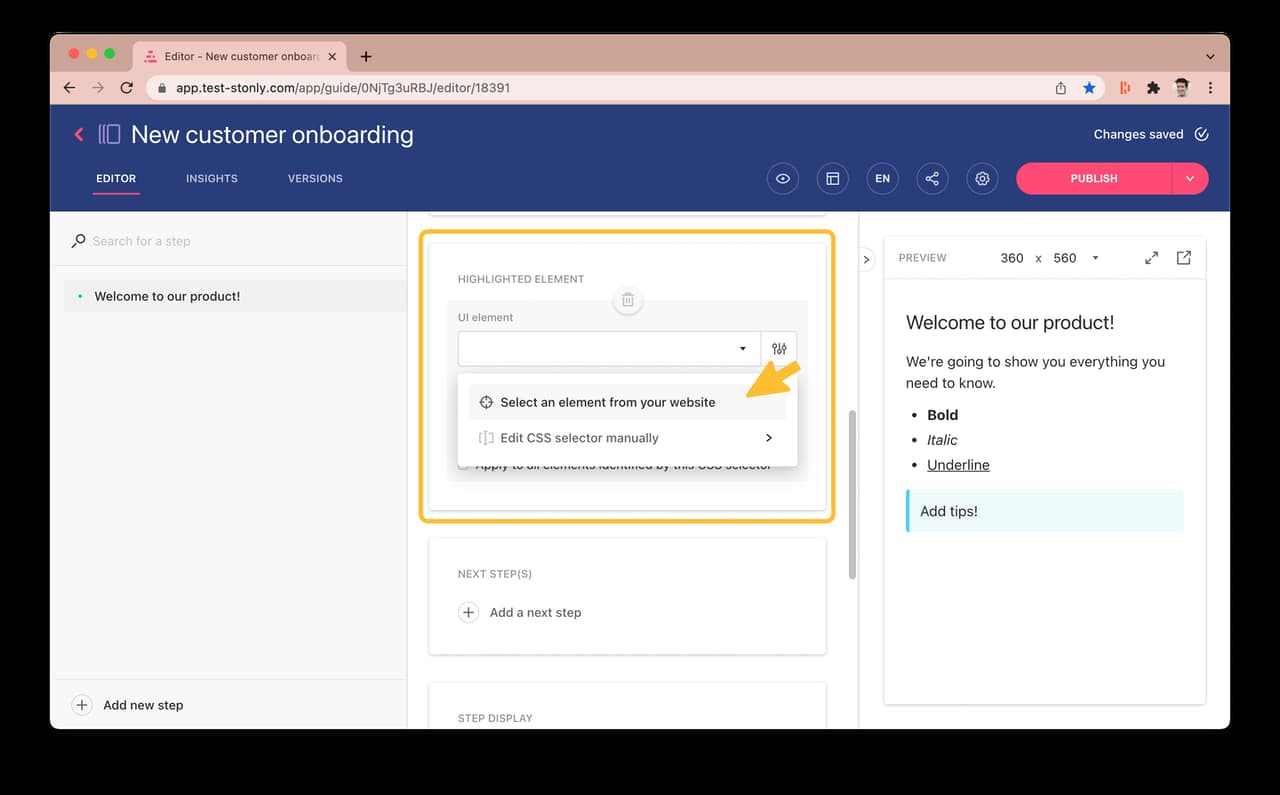
Stonly positions themselves as an inexpensive but equally effective alternative to some of their higher-priced competitors. One of the most interesting features of Stonly is the ability to build a knowledge base. These knowledge bases function as an interactive guide for log-in issues, technical issues, and more.
Stonly includes integrations with the likes of Zendesk and Front. It also contains multi-language support and a competent analytics platform for product adoption optimization. A “Basic” subscription is free, though this pricing tier comes with caveats like Stonly ads and limited access to popular features.
Stonly’s low entry point for pricing might be perfect for small businesses or startups unconcerned about monthly usage caps. However, established businesses with more demanding product tour needs may find the lack of certain product experience options like checklists or progress bars restrictive.

Chameleon is an apt name for a product that is keen on customization. Its main appeal is a single concept: that customization is king. Chameleon backs up its strong customization selection with a solid array of product tour tools, including microsurveys, hotspots, and labels. While it contains its own analytics platform, Chameleon also integrates with powerhouse solutions like Amplitude.
The custom coding works well for a product team without developer bandwidth. However, outsourcing coding is a double-edged sword. It limits the agility of a team that’s ready to implement a product tour ASAP. If the custom coding misses the mark in the first iteration, the back-and-forth delays are only compounded.
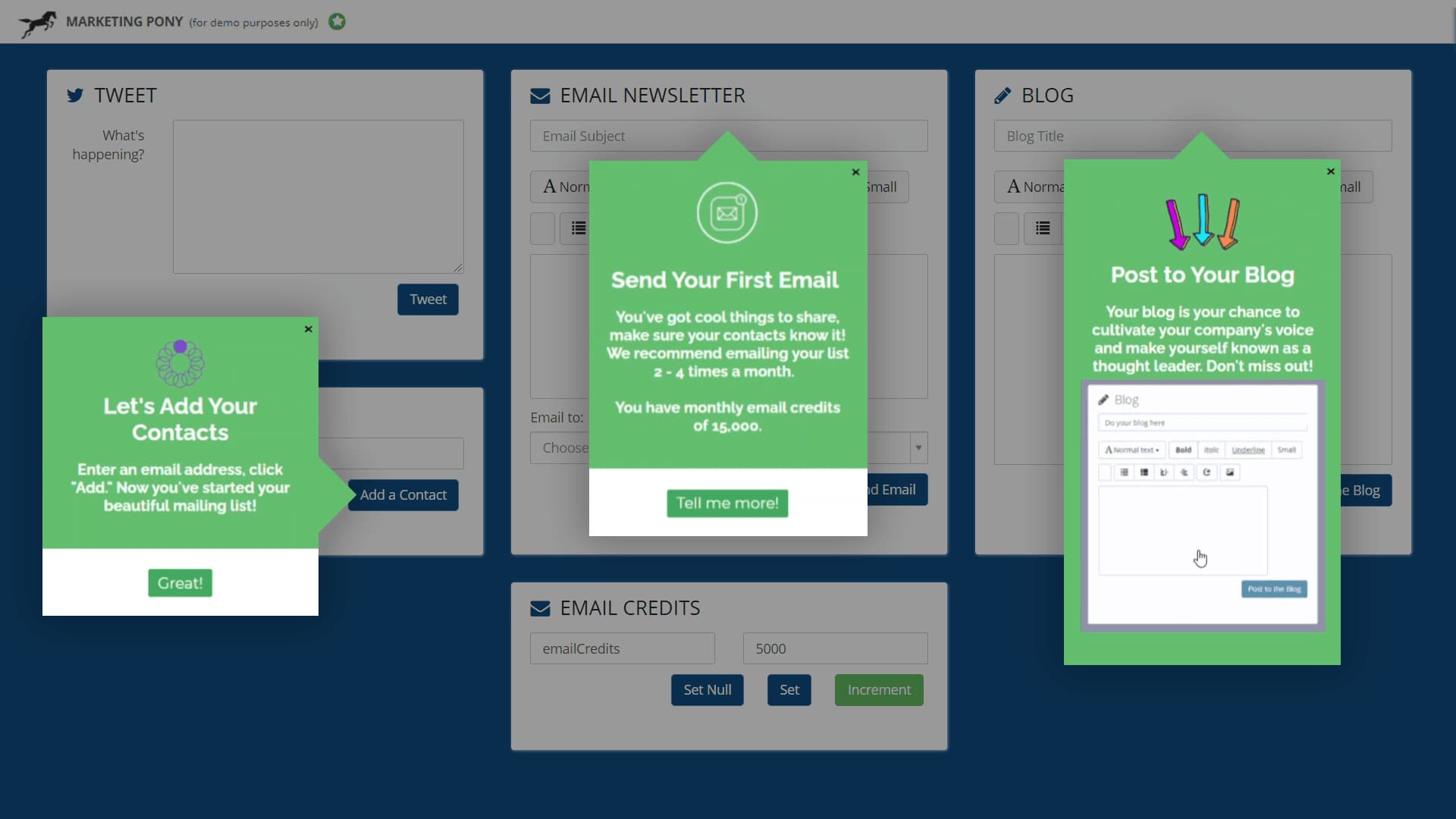
ChurnZero is different than the others on this list in that they’re less an exclusive onboarding product and more a total customer success platform. It’s a formidable piece of software that follows the customer experience from onboarding to renewal. Its primary goal is to prevent customers from churning, and there’s no better place to address the customer experience than the product tour. As such, ChurnZero provides companies with the ability to guide customers through products with the use of modals, knowledge bases, and more.
ChurnZero contains a multitude of churn prevention features—perhaps too many. Onboarding is just one of many focuses of the product, meaning the UI is designed to address a number of other churn-related tasks. Also, the product experience options are limited compared to other onboarding-specific competitors. ChurnZero works best for companies already in the market for a new customer success platform.
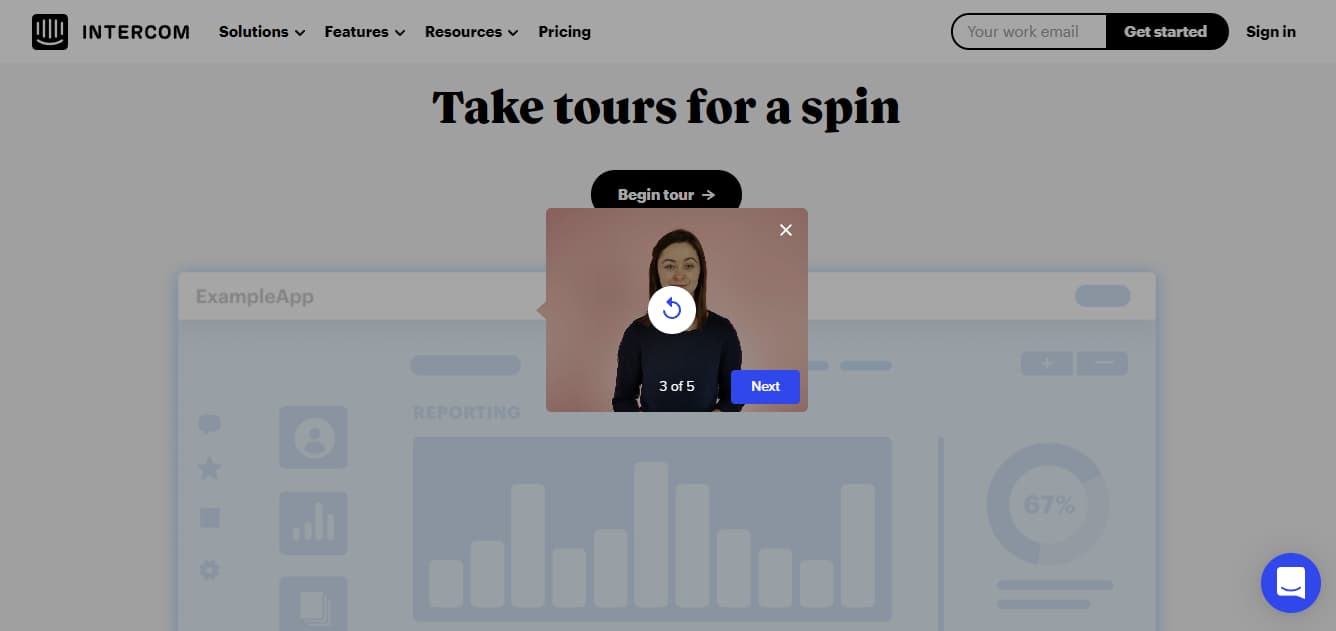
Intercom is another on this list that is focused on a total customer engagement platform. The product tour software portion supports their entire ecosystem of products including an AI-powered chatbot. If your business is already using Intercom for your customer support and communication needs, the product tour add-on is a logical choice. The tours themselves function well and get the user from point A to point B effectively.
For companies not currently using Intercom, the product tour software can feel limited compared to onboarding products designed to stand alone. It lacks some essential product experience options like modals and tooltips. Additionally, the tours themselves are attributed to a real person—name, picture, and all. This level of personalization works well for some products. However, there’s no way to deactivate the authorship feature. Ultimately, Intercom may work perfectly for your needs, but those who are likely to get the most benefit are existing Intercom customers.

Userlane is another product tour software option that includes code-free implementation, interactive tour features, and a well-designed in-app UX. Its “Userlane Assistant” feature serves as an interactive knowledge guide for customers who require help at any step. The Assistant is only enhanced by Userlane’s ability to target and segment users based on behaviors using the product’s built-in analytics functionality.
The primary drawback to Userlane is that it doesn’t appear polished. Their analytics and reporting features lack certain desirable features like the ability to export data to Excel. A few people have pointed out bugs that have disrupted their work in the Userlane editor. However, these issues are countered by Userlane’s strengths as an interactive product tour solution.

Usetiful can be considered a more affordable option than most of the other options on this list. Their product tours can leverage customizable tools like tip balloons, checklists, and smart tips. They’re also developing a virtual assistant of their own for additional in-app help.
Setting up Usetiful isn’t as easy as some of its competitors and it lacks the functionality to support complex or demanding product tours. Its analytics functions get the job done, but they aren’t as powerful as those of many competitors—at least, not yet!
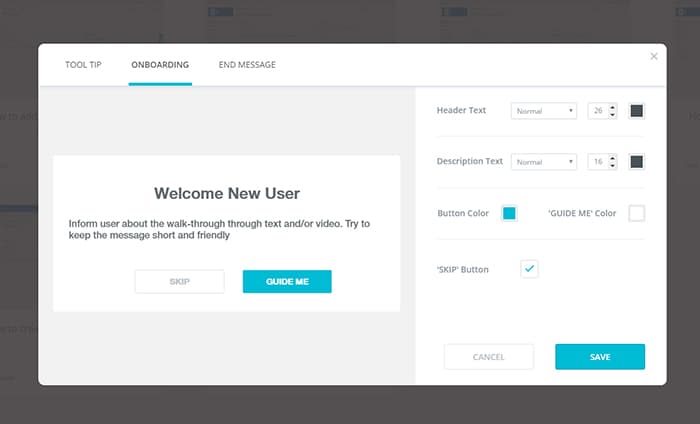
Whatfix is trusted by companies like Cisco and Western Union, which speaks a lot to their credibility. The product itself is easy to install via Google Chrome extension and a snippet of JavaScript. Easy installation gives way to an accessible user interface. It’s simple to construct interactive product tours with videos, modals, hotspots, and more.
Whatfix’s primary strength is as an employee onboarding tool. This means it’s a great solution for any company needing to address both their workers and their customers. However, Whatfix’s focus on employee onboarding means their customer-centric software feels limited in comparison. In-app styles and design leave something to be desired. Additionally, any user who wants to dive into their analytics will need to set up a Google Analytics integration as Whatfix does not have a platform built-in.

Intro.js prides itself on being the hands-on David to the competition’s code-free Goliath. It’s an open source software that requires a commercial license and takes up a whopping 10kB on your hard drive. It’s also amongst the cheapest options, with an entry-level plan for a single project costing just under $10.
Those with a solid grasp of CSS and JavaScript can use Intro.js to build functional product tours using tools like tooltips and hotspots. The effectiveness of these tour elements will depend on your own coding skills. If your coding skills aren’t what they used to be, one of the other code-free options is likely to serve you better. However, Intro.js is a terrific budget option for anyone with enough coding savvy to take advantage of the product’s low initial cost.

WalkMe is one of the oldest companies on this list. Over the last decade, they’ve built their reputation as a terrific digital adoption platform (DAP) for enterprises looking to onboard employees and customers alike. WalkMe’s walkthroughs can be segmented to give specific demographics unique experiences. Its SmartTips (tooltips) and ShoutOuts (modals) round out its array of product experience tools. WalkMe also has a code-free editor that can be used for tour building. However, it isn't particularly intuitive. Building a tour sometimes requires the assistance of WalkMe's service team.
Like most other companies that address both employee and customer onboarding, whether or not WalkMe would work for your product depends on whether you are also looking to address employee onboarding. Their entire product focuses heavily on employee training, meaning their product tour tools aren’t as refined or robust as those from other user-centric software options. Additionally, pricing requires a custom quote, but former customers suggest that WalkMe’s range is higher than many competitors on this list.
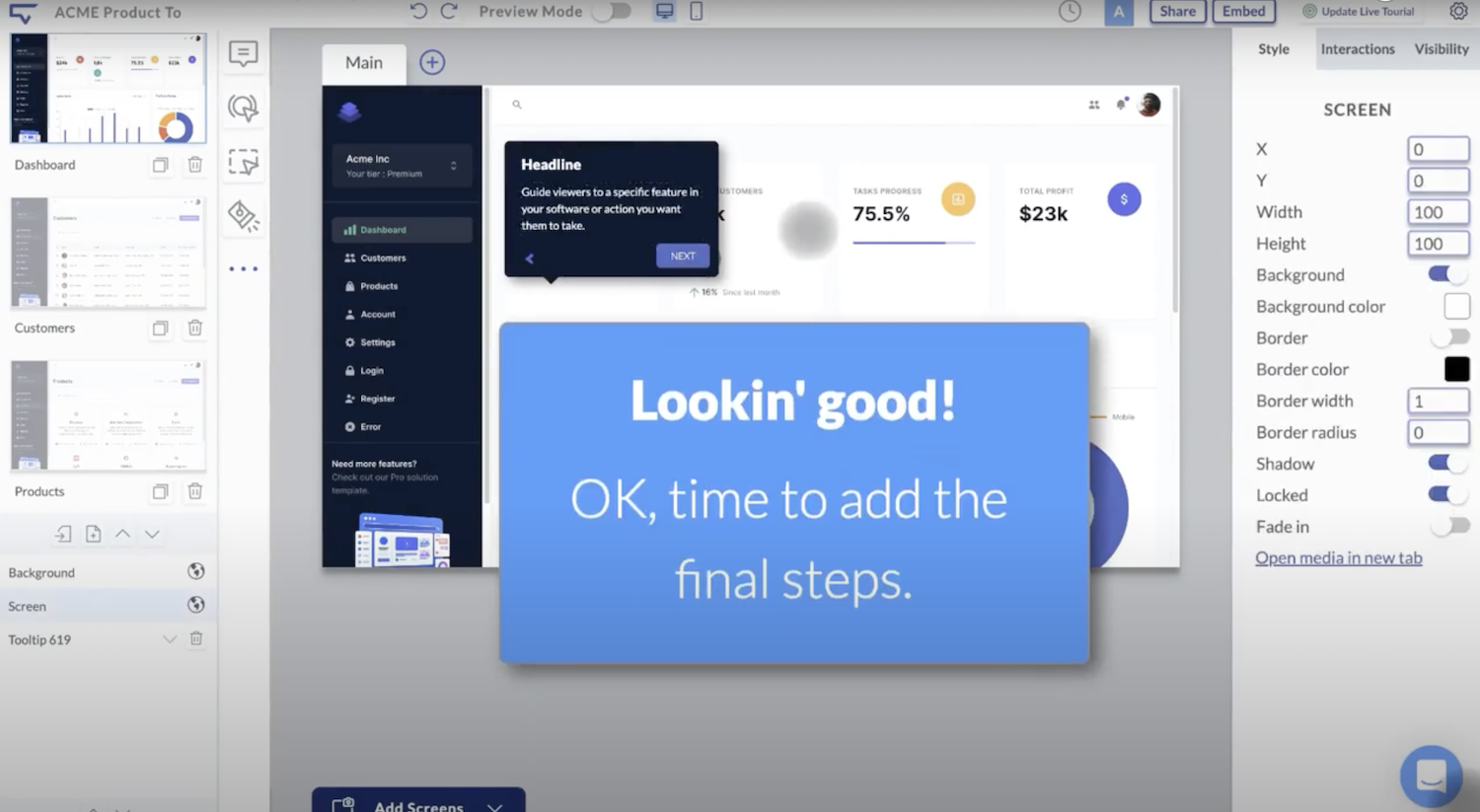
Founded in 2019, Tourial was conceived as a product tour software that's part tutorial, part tour. Sales and marketing teams use Tourial to craft focused narratives that demonstrate how a product addresses the specific pain points of a buyer. The product creates tours by adding a layer of interactivity to once static screenshots.
Tourial is focused more on the pre-sale side of things than customer onboarding experiences. It features integrations with Hubspot, Marketo, and other parts of the customer and prospect-facing GTM tech stack.

One of the newer product tour software solutions on this list, Navattic was founded in 2020. Still in a rapid-growth stage, Navattic's focus is less on onboarding and more on using product tours and on-site demos as lead qualification boosters.
By using Navattic’s no-code interface, customer-facing teams can easily create demos that walk users through various use cases and help close the gap between tire kickers and people who want to see the software in action before starting a conversation with sales.